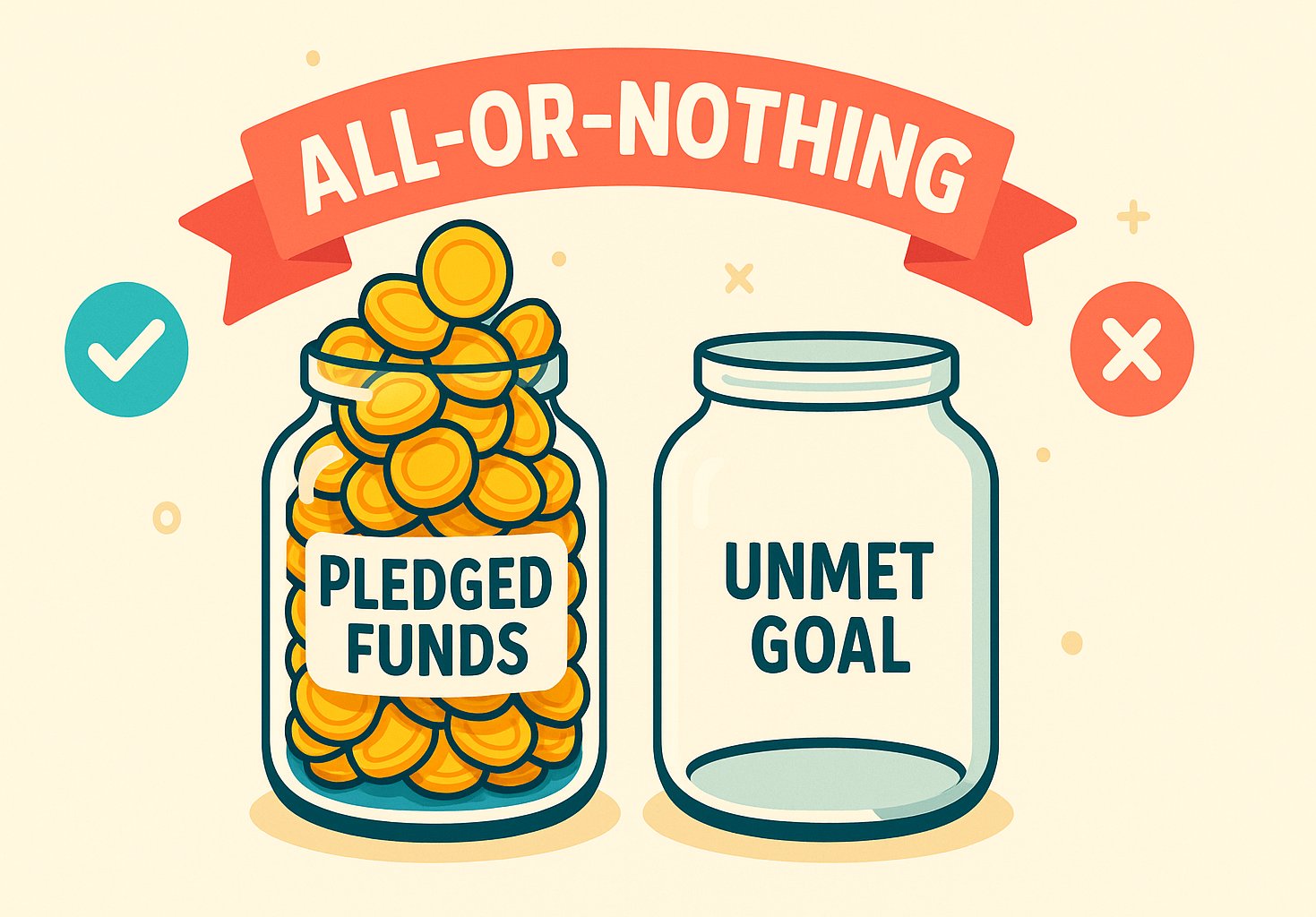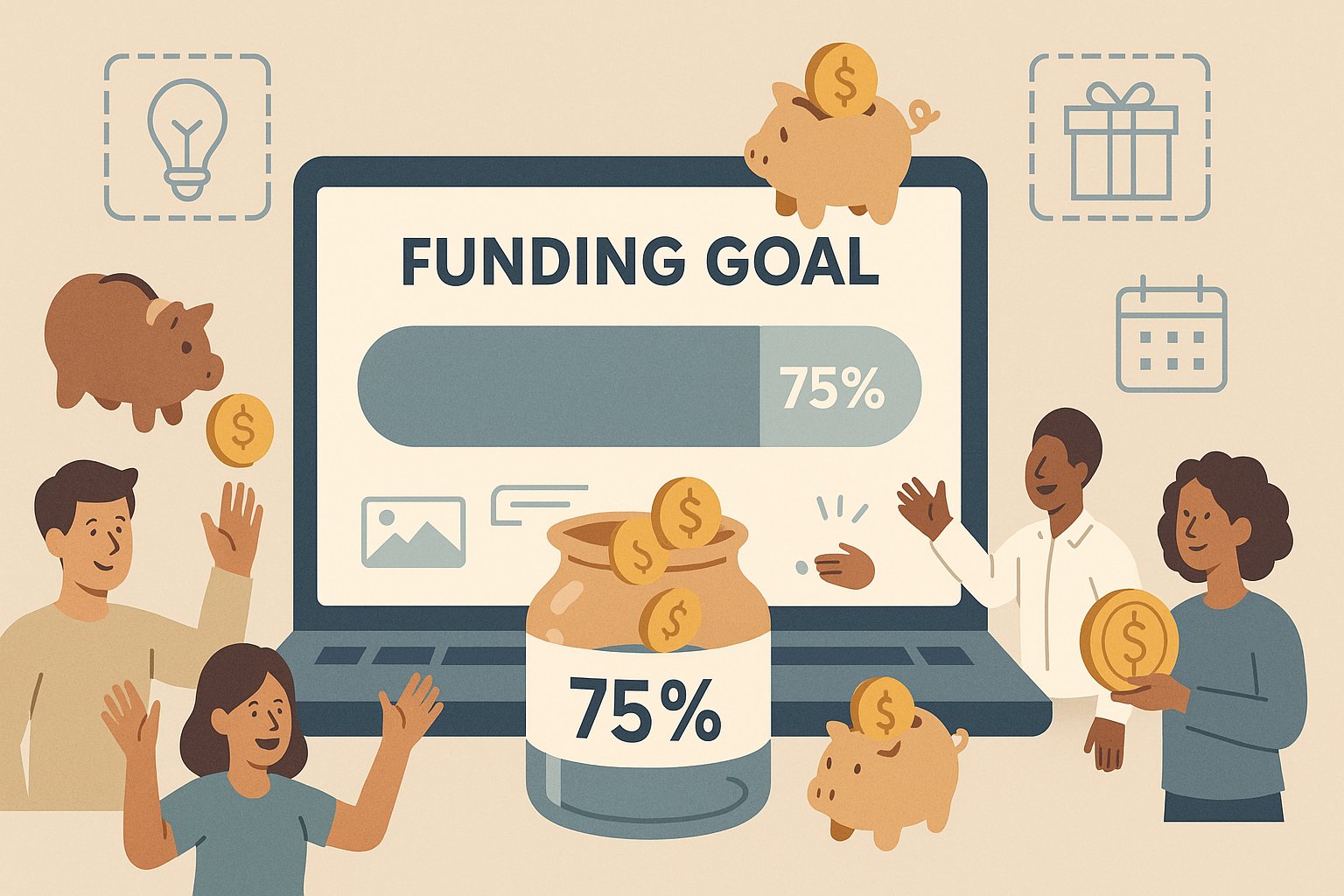Embracing the High-Stakes Magic of “All-or-Nothing” Crowdfunding
Crowdfunding has reshaped how creative projects, startups, and social initiatives secure capital. Among the many models available, “All-or-Nothing” stands out as a powerful magnet for backer confidence, campaign strategy, and reward fulfillment. Under this model, a project only receives funds if it meets or exceeds its fundraising goal within the campaign timeframe—delivering a clear yes or no verdict on whether the project proceeds. This binary outcome may seem risky, yet it creates an electrifying sense of urgency and alignment between creators and supporters. Imagine launching a sleek new gadget on a platform like Kickstarter. You set a funding goal of $100,000 to cover tooling, manufacturing, and shipping. As pledges roll in, you share weekly updates on prototype refinements, celebrate milestone achievements, and unveil stretch goals to entice further support. Backers pledge early to secure exclusive discounts, knowing that their contributions only count if the project crosses the threshold. As the deadline approaches, excitement peaks: every pledge pushes the campaign closer to success, and the entire community rallies in the final hours. When the campaign hits $100,001 with minutes to spare, the collective cheer resonates across social media, press outlets pick up the story, and production gears shift into motion. Had the campaign fallen even one dollar short, every pledge would have been refunded automatically, and the project would have to regroup, retool, and relaunch. This high-stakes structure invites creators to plan meticulously, communicate transparently, and galvanize their communities. It assures backers that projects are fully funded before costly efforts begin, reducing the risk of unfulfilled promises. Yet the “All-or-Nothing” approach also demands strategic thinking, disciplined execution, and emotional resilience in the face of potential setbacks. In this in-depth exploration, we’ll unpack what “All-or-Nothing” means in crowdfunding, why it captivates both creators and contributors, how to leverage its strengths, and what pitfalls to avoid on the path to funding triumph.
Defining “All-or-Nothing”: A Binary Funding Model
At its core, “All-or-Nothing” crowdfunding stipulates that a campaign’s pledged funds are only collected if the total contributions meet or exceed the predefined funding goal by the campaign’s deadline. If the goal is achieved, the platform charges backers’ payment methods, deducts any applicable fees, and transfers the net funds to the creator. If the goal is not met, no transactions occur and backers are not charged, effectively canceling the campaign’s financial side. This stark yes-or-no outcome distinguishes “All-or-Nothing” from flexible funding models, where creators retain all pledges regardless of whether the goal is reached, and from pre-payment systems that simply collect up-front deposits. The “All-or-Nothing” structure is ubiquitous on many major reward-based platforms, particularly for creative and technology projects. Its design aligns backer expectations with creator obligations: backers invest in projects only when they’re confident that sufficient support exists to bring the idea to life, while creators mitigate the risk of partial funding that would jeopardize project viability. This arrangement fosters trust, transparency, and communal engagement—each pledge underscores collective commitment, and every backer plays a pivotal role in tipping the scales from promise to production.
The Psychology of All-or-Nothing: Mobilizing Momentum
“All-or-Nothing” campaigns tap into powerful psychological drivers. The looming deadline creates urgency, spurring backers to act promptly rather than procrastinate. Knowing that their individual pledges can be the decisive factor fosters a sense of agency: each supporter becomes a catalyst for success. This phenomenon is amplified by the visible progress bar—a cumulative meter showing percentage funded and days remaining. As the campaign nears 80 or 90 percent funded, the perceived likelihood of success surges, propelling even fence-sitters to contribute.
Moreover, “All-or-Nothing” leverages social proof. Early momentum—sparked by generous lead backers or influencer endorsements—signals credibility and generates buzz. When potential supporters observe robust pledge activity, they perceive reduced risk, believing the project has passed initial viability tests. In contrast, flexible funding campaigns may struggle to demonstrate viability if pledge totals stagnate below goals, leading to donor hesitation. By contrast, “All-or-Nothing” converts every pledge into a vote of confidence, reinforcing communal trust and driving an upward spiral of pledges and publicity.
Advantages for Creators: Minimizing Risk, Maximizing Trust
Creators choosing the “All-or-Nothing” model gain several strategic advantages. First, they avoid the burdens of underfunding. If a campaign fails to meet its goal, they incur no production or fulfillment obligations, sparing them the financial strain and reputational damage associated with partially funded projects. This safeguard encourages ambitious goal-setting without the fear of fiscal overcommitment.
Second, “All-or-Nothing” fosters stronger backer trust. Contributors know their funds are held in escrow until the goal is reached, ensuring that creators possess the full budget required before initiating development, manufacturing, or service provision. This transparency contrasts sharply with flexible funding, where creators may receive limited funds yet still bear the responsibility of delivering incomplete promises, eroding backer confidence.
Third, the binary outcome streamlines campaign messaging. Creators rally their communities around clear, tangible checkpoints: “Help us reach 70 percent today to unlock the next update,” or “We need just $5,000 more by midnight to launch production.” This clarity galvanizes supporters, simplifies promotional campaigns, and lends itself to effective call-to-action framing across social media, email newsletters, and press outreach.
Challenges and Pitfalls: Navigating Near-Misses and Setbacks
While “All-or-Nothing” offers compelling benefits, it carries inherent challenges. Near-miss scenarios—campaigns that fall just shy of goals—can be heartbreaking. Weeks or months of marketing, prototype development, and community building may culminate in failure by a whisker, requiring creators to regroup, refine their pitch, and relaunch entirely. Such outcomes can dampen morale and strain relationships with early believers who may hesitate to support a second attempt. Moreover, the psychological pressure of a ticking clock may drive creators into hasty decisions. In a bid to hit targets, they might announce stretch goals prematurely, promise overly ambitious rewards, or expand production scopes without thorough vetting. If a campaign ultimately succeeds, managing these added commitments can overwhelm fulfillment capacities, leading to delays and backer dissatisfaction. Technical issues—platform glitches, payment processor failures, or misconfigured reward tiers—pose additional risks. If large pledges fail to process correctly near the deadline, the campaign could inadvertently miss its goal. To mitigate such pitfalls, creators must engage in rigorous pre-launch testing, maintain clear communication channels with platform support, and establish contingency plans for payment or fulfillment snafus.
Case Studies: Learning from All-or-Nothing Triumphs and Trials
Examining real-world examples illuminates the power and precariousness of “All-or-Nothing” crowdfunding. The Pebble Time smartwatch campaign on Kickstarter sought $500,000 but raised over $20 million, partly due to the urgency and trust engendered by the all-or-nothing structure. Backers flocked to secure early bird tiers, and the visible surge in funding created a self-reinforcing momentum that carried the campaign to record-breaking heights.
Conversely, the Coolest Cooler campaign, though ultimately funded, exemplified expansion pitfalls. Initially seeking $50,000, it raised $13 million and added numerous stretch goals. Fulfilling these promises—complex hardware integrations and accessory add-ons—overwhelmed the team’s manufacturing and logistics capabilities, resulting in significant delays and backer complaints. This scenario underscores that while “All-or-Nothing” can unlock massive support, creators must scale responsibly and resist the impulse to overpromise.
Best Practices: Crafting a Successful All-or-Nothing Campaign
To harness the allure of “All-or-Nothing,” creators should begin with meticulous pre-campaign planning. This includes validating product feasibility, securing preliminary supplier quotes, and drafting a detailed fulfillment roadmap. Simultaneously, building an engaged community prior to launch—via email lists, social media teasers, and press previews—ensures initial momentum that is crucial for early funding surges.
Clear, compelling storytelling is paramount. Campaign pages should feature persuasive videos, high-quality imagery, and transparent breakdowns of how funds will be allocated. Reward tiers must balance attractiveness with production practicality: limited early bird slots create urgency, while mid-level tiers offer core product access at fair prices. Stretch goals should unlock incremental enhancements—color variants, accessory bundles—rather than radical redesigns that risk operational overload.
Communication cadence plays a pivotal role in maintaining backer excitement. Weekly updates showcasing behind-the-scenes progress, prototype testing footage, and Q&A sessions forge trust and foster community. In the final days, strategic countdowns—highlighting remaining time and dollars needed—fuel the rush toward the deadline. Post-campaign, swift acknowledgement of funds received and detailed next-step timelines reassure backers that their support transitions seamlessly into execution.
Alternatives and Hybrids: Exploring Flexible Funding and Minimum Guarantees
While “All-or-Nothing” remains the predominant reward-based model, alternatives exist. Flexible funding models let creators keep all pledges, offering a safety net for small or pilot projects. Minimum guarantee structures allow partial funding distribution once a lower threshold is met, with additional funds unlocked if stretch milestones are reached. Hybrid approaches combine all-or-nothing urgency with predefined contingency allocations, enabling creators to begin limited production even if full goals aren’t met, while refunding any excess contributions if they exceed needs.
Choosing the right model depends on project complexity, backer expectations, and risk tolerance. For simple digital offerings—e-books, software tools—flexible funding may suffice. For capital-intensive hardware, film production, or global service launches, “All-or-Nothing” provides essential assurance that creators possess the full budget required before proceeding. Understanding these nuances guides creators to match funding structures with project realities.
Metrics That Matter: Tracking Success Beyond the Goal
Reaching the funding goal is a pivotal milestone, but campaign health encompasses additional metrics. Conversion Rate—the percentage of page visitors who pledge—indicates pitch effectiveness. Average Pledge Value reveals how backers engage with different reward tiers. Traffic Sources identify which marketing channels—social media ads, email newsletters, influencer endorsements—drive the most backers. Post-campaign success hinges on fulfillment metrics: On-Time Delivery Rate, Backer Satisfaction Scores, and Repeat Backer Engagement inform future projects. Analyzing these data points enables creators to refine reward structures, optimize marketing budgets, and enhance production workflows. Ultimately, coupling “All-or-Nothing” fundraising with robust performance tracking elevates campaigns from one-off experiments to sustainable ventures.
Turning “All-or-Nothing” into Opportunity
The “All-or-Nothing” crowdfunding model offers both a thrilling journey and a structured safeguard. By requiring full funding before execution, it aligns backer trust with creator responsibility, creating a dynamic environment where urgency, transparency, and community converge. While the binary nature of success or failure carries inherent risks—near-miss heartbreaks and operational overload from overambitious stretch goals—it also cultivates unparalleled momentum when executed thoughtfully. Creators who embrace “All-or-Nothing” must plan diligently, communicate consistently, and scale responsibly. They build engaged communities long before launch, craft compelling narratives that resonate emotionally, and set realistic goals supported by concrete fulfillment roadmaps. Through strategic use of early bird incentives, clear funding milestones, and detailed updates, they turn individual pledges into collective triumphs. As crowdfunding continues to evolve, “All-or-Nothing” remains a cornerstone model—its high-stakes clarity driving innovation and powering dreams. By mastering its principles and learning from both triumphs and trials, creators can transform risk into opportunity and guide their projects from initial spark to tangible achievement. Happy campaigning!




